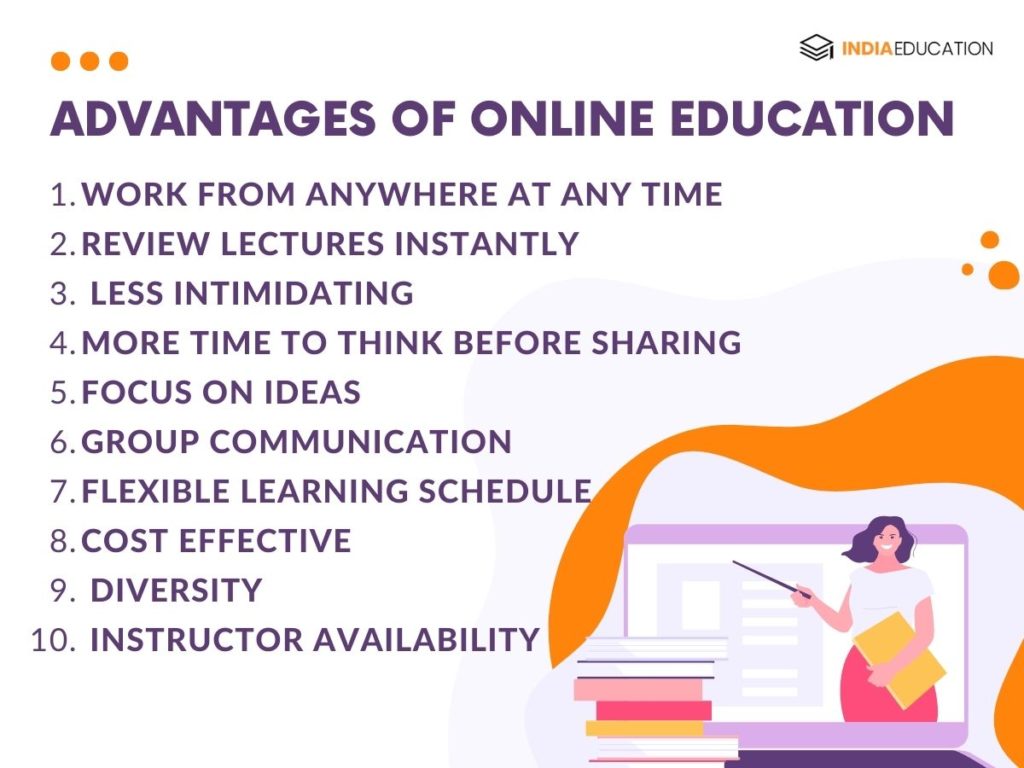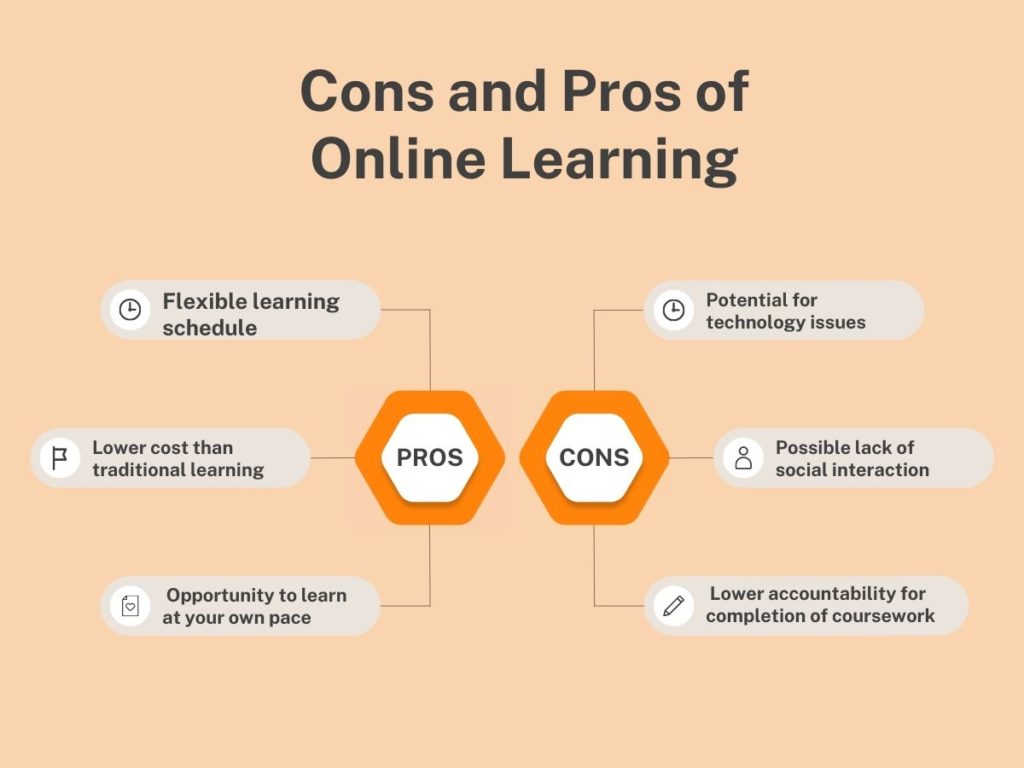
10 benefits of online learning
Amit Yadav

The rise of digitalization in the educational sector has necessitated the emergence of online classes for students around the world. These classes offer many advantages of online classes, such as the ability to study from any location, inexpensive fees, and a great degree of flexibility and convenience, saving students both time and money.
The great benefits of online classes are undeniable. From its accessibility to its flexibility, students can reap the rewards of virtual learning that they may not be able to experience in traditional classrooms. Here we discuss the advantages of online education and how it can benefit you.
While online, these distance learners join in virtual lectures, chat with fellow students, pose questions to professors, take virtual exams, conduct research and much, much more. But why has online learning grown so much so fast? Here is the list of 10 advantages of online classes.

Here are 10 great benefits of online learning:
Online learning has different advantages and disadvantages features. So why choose online learning to obtain your educational goals? Here are the 10 advantages of online learning that includes:
1) Work from anywhere at any time
This is a great benefit of online learning for students with many duties to balance. Since everything is available online, accessing class materials and submitting work is very convenient. Exactly when and where this takes place is up to the student, as long as assignment due dates are met.
2) Review lectures instantly
It’s easy for minds to wander during a lecture. University of California psychologist Jonathan Schooler found that students lose focus about 5 times in a 45-minute class session. In many online programs, however, students can review words from professors instantly, either by rewinding the audio or video or by reading the transcript that accompanies the lecture as it is only advantages of online education.
3) Less intimidating
Many students in classroom environments aren’t comfortable speaking in public. As a benefit of an online class environment, it can be much easier to share thoughts with others. With 74 per cent of people suffering from speech anxiety, according to the National Institute of Mental Health, online education tends to foster better class participation.

4) More time to think before sharing
Advantages of online learning and online schooling still has a discussion element to it, often in a forum or discussion board. On-campus students have to choose a stance or formulate a thought in class quickly and sometimes speak before they’ve fully examined everything. In an online environment, students can spend as much time as they want thinking about and honing their own ideas. This can lead to greater confidence and more elegant discussions.
5) Focus on ideas
With an estimated 93 per cent of communication being non-verbal, online students don’t have to worry about body language interfering with their message. While body language can be effective sometimes, academics are more about ideas, and online education eliminates physical judgments that can cloud rational discussion.
6) Group communication
Many degree programs today incorporate some sort of group project or teamwork. Working with others on-campus or locally means coordinating specific days and times so everyone can attend. Distance learning programs, however, foster virtual communication and allow students to work with team members via email, chat rooms and other easy-to-use methods.
7) Flexible learning schedule
On-campus students may have to endure in-person lectures that last hours. While not all online programs are built the same, many use PowerPoint presentations and other media that students can digest in pieces. In other words, a student can experience the first half of a lesson one day, and the second half the next day. This can be especially helpful for those who don’t enjoy sitting in one place for too long.
8) Cost
Although the cost of an online course can be as much or more than a traditional course, students can save money by avoiding many fees typical of campus-based education, including lab fees, commuting costs, parking, hostels, etc. Imagine living in Dhule but going to college in Mumbai.
9) Diversity
Traditional students are often limited to courses and teachers close to home. The online student can take a French course from a teacher in France and a travel-writing course from a writer who’s out travelling, without having to leave home.
10) Instructor availability
At traditional colleges and universities, talking to a professor after class can be challenging. Yes, instructors have office hours, but it’s often only an hour or two each week, with too many students waiting for attention. While professors who teach online may also have set hours for student interaction, web-based technologies make conversing with multiple students at once much easier. Professors can also hop online at night or during intermissions to address questions, leave comments and more as it is the most beneficial of an online class.
What are the pros and cons of online learning?

Online learning has become increasingly popular in recent years, as it offers a convenient way for students to gain knowledge and skills without having to attend classes in person. While there are a number of advantages to this type of learning, there are also a few drawbacks. On the plus side, merits of online classes allow students to learn at their own pace and on their own schedule, which can be especially helpful for those with busy lives.
Pros of Online Learning:
- Flexible learning schedule
- Lower cost than traditional learning
- Ability to learn from anywhere with an internet connection
- Access to a wider variety of educational materials
- Opportunity to learn at your own pace
Cons of Online Learning:
- Potential for technology issues
- Possible lack of social interaction
- Lower accountability for completion of coursework
- The difficulty of replicating the traditional classroom experience
- Potentially lower quality of education than traditional learning
In Conculsion
In recent years this form of online education has evolved and is widely accepted. You monitor your study environment with an online class, which allows you to gain a more profound understanding of your course. New learning models are constantly emerging on the market and give students various ways to fashion their education into something that suits them, not the rest. This also gives individuals a chance to complete a degree that they may have started and have not been able to continue for whatever reason. The future of online learning is exciting and opens education for a significant number of people.
While traditional education will never go away, neither will distance learning. With online enrollment increasing every year, it looks like online schooling is making its mark, causing students to ask, “How important are flexibility and effective learning to me?”
Related Links
- 11 Free Online Courses that you can take up from Home
- 5 facts about distance education in India
- Pros & Cons of Distance Learning
- Are distance learning, online learning and e-Learning the same?
- 3 success stories
- 5 Online Education Trends to Watch in India in 2017
- Questions to ask online colleges
- 7 questions before online education
- All about MOOCs (Massive Open Online Courses) in India & Abroad
- Jobs after Distance Learning
Latest News
People Reading Now

CBSE Compartment Result 2023 OUT: Click For Direct Link



CSAB 2023: Special Round Registration Begins Today


Lorem ipsum dolor sit amet, consectetur adipiscing elit. Ut elit tellus, luctus nec ullamcorper mattis, pulvinar dapibus leo.



